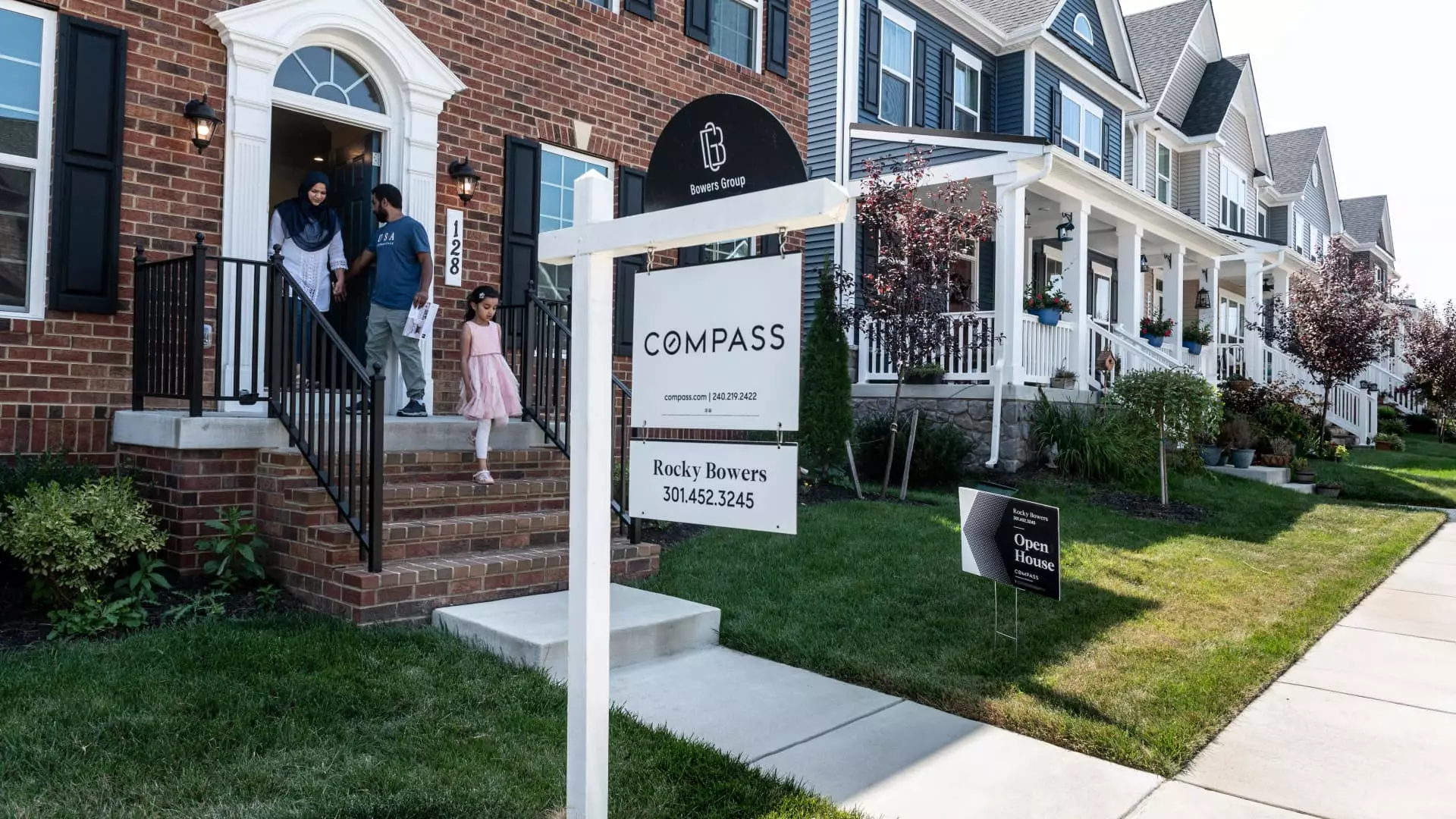The U.S. housing market has been navigating a challenging landscape characterized by a confluence of high mortgage rates, a limited supply of available homes, and escalating home prices. Compounding these issues is the recent imposition of tariffs on essential building materials, which threatens to create additional barriers for both builders and prospective homeowners alike.
Since President Trump enacted tariffs on imports from Canada and Mexico, the implications for the housing market have become increasingly apparent. Approximately 30% of the softwood lumber utilized in the United States originates from Canada, while gypsum wallboard, critical for construction, is primarily imported from Mexico. The imposition of a steep 25% tariff on these imports not only inflates costs for builders but consequently forces home prices to rise, thereby exacerbating an already strained market.
The National Association of Home Builders (NAHB) has publicly called attention to the ramifications of this policy, underscoring that over 70% of essential materials, such as softwood and gypsum, are sourced from these two countries. Carl Harris, the NAHB’s chairman, articulated the concern that tariffs would not only escalate construction costs but also stifle new development projects, essentially pushing additional financial burdens onto consumers facing an already inflated housing market.
The S&P CoreLogic Case-Shiller national home price index revealed a staggering 40% increase in home prices since the onset of the COVID-19 pandemic, with an increase of 3.8% recorded in November alone compared to the year prior. These price surges have disproportionately affected first-time buyers who are already grappling with budget constraints in the face of rising interest rates. Analyst Jaret Seiberg from TD Cowen noted that the added pressure from tariffs could further worsen the affordability crisis, making it increasingly difficult for prospective homeowners to enter the market.
While the tariffs may potentiate a call for Congress to introduce policies designed to stimulate entry-level construction, weaknesses remain evident. Budding homebuilders may find it increasingly difficult to offer affordable housing options due to the surging costs of basic materials. The construction industry faces a delicate balance between embracing new regulatory frameworks and managing rising expenditures—an aspect that could shape market dynamics moving forward.
The imposition of tariffs could lead to a substantial increase in building material costs—estimates suggest a potential rise of $3 billion to $4 billion in expenses if all tariffs are enforced. This immense financial burden primarily impacts smaller builders who often operate with narrower margins, yet larger firms are not exempt. Sheryl Palmer, CEO of Taylor Morrison, conveyed that although large builders might rely less on Canadian lumber and Mexican gypsum, the ripple effects of serious cost increases would still trickle down, influencing overall consumer affordability.
In parallel, the construction industry is also grappling with an acute labor shortage, exacerbated by the Trump administration’s stringent immigration policies. Estimates indicate that about 30% of construction workers are immigrants, many of whom are undocumented. The exodus of these workers raises critical questions about construction capacity and long-term market sustainability. Bruce McNeilage, CEO of Kinloch Partners, voiced the concern that merely removing undocumented workers does not provide a viable solution for filling labor gaps vital to maintaining housing growth.
As the costs of consumer goods escalate due to tariffs, potential homebuyers may find their disposable income constrained, impacting their ability to save for down payments. The interrelationship between rising material costs and consumer purchasing power has immediate implications for the upcoming spring housing market, a pivotal period for home sales. Prospective buyers may become increasingly hesitant to enter a market that seems increasingly untenable.
Additionally, there were initial expectations of declining interest rates for the year; however, tariffs’ adverse impact on inflation may stifle that hope, potentially leading to increased rates instead. This situation creates a feedback loop wherein economic realities and public perceptions about personal wealth converge to create heightened market volatility.
The interplay of tariffs, rising costs, and market instability presents a multifaceted challenge for the U.S. housing sector. As builders grapple with heightened construction costs and a depleted labor force, prospective homeowners face a bleak landscape marked by affordability crises and economic unpredictability. The future of the housing market may well hinge on the ability of policymakers and industry leaders to address these pressing challenges and restore equilibrium in this fundamental sector of the economy.

